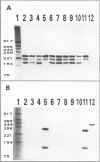Abstract
A method allowing rapid and accurate identification of different subgroups within the insecticidal crystal CryI protein-producing family of Bacillus thuringiensis strains was established by using PCR technology. Thirteen highly homologous primers specific to regions within genes encoding seven different subgroups of B. thuringiensis CryI proteins were described. Differentiation among these strains was determined on the basis of the electrophoretic patterns of PCR products. B. thuringiensis strains, isolated from soil samples, were analyzed by PCR technology. Small amounts of bacterial lysates were assayed in two reaction mixtures containing six to eight primers. This method can be applied to rapidly detect the subgroups of CryI proteins that correspond with toxicity to various lepidopteran insects.
Full text
PDF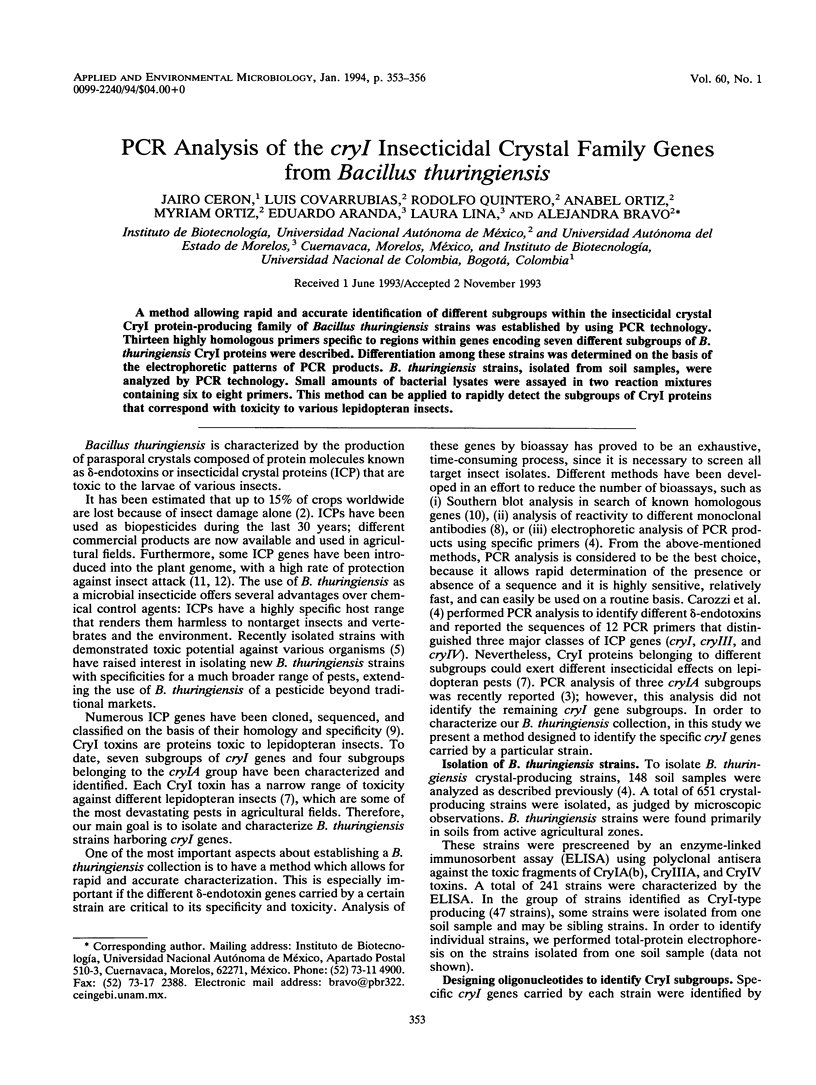
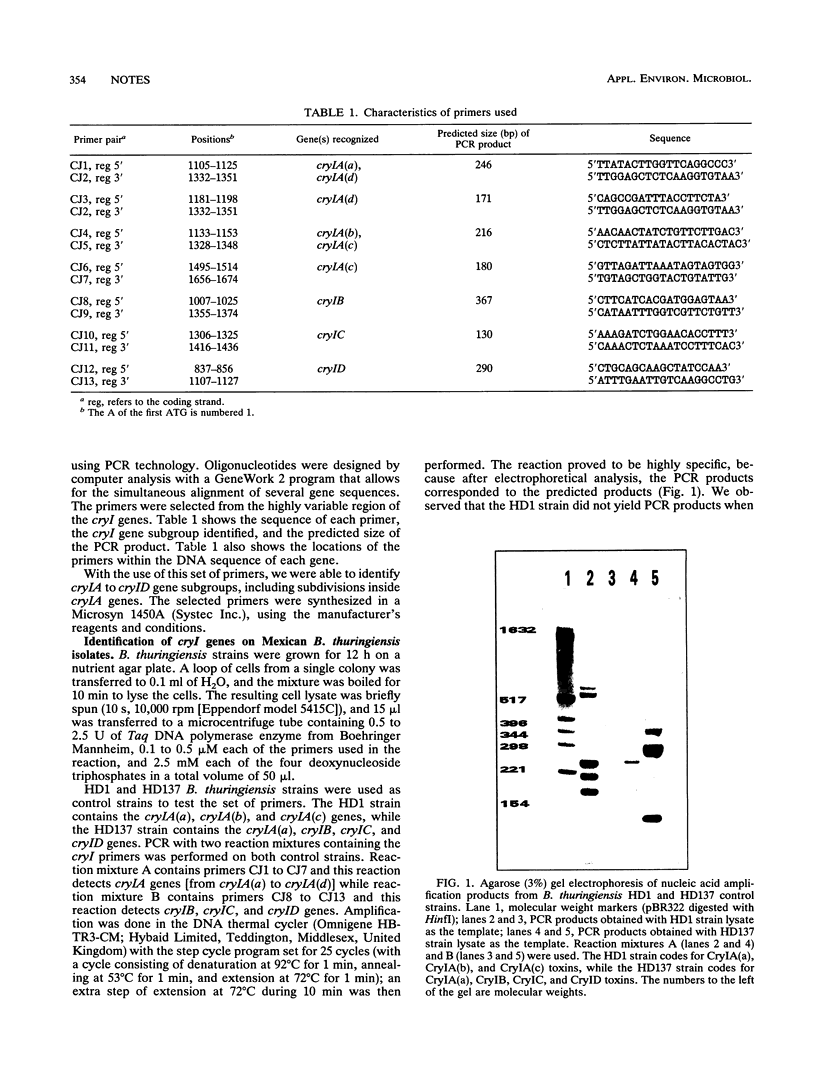
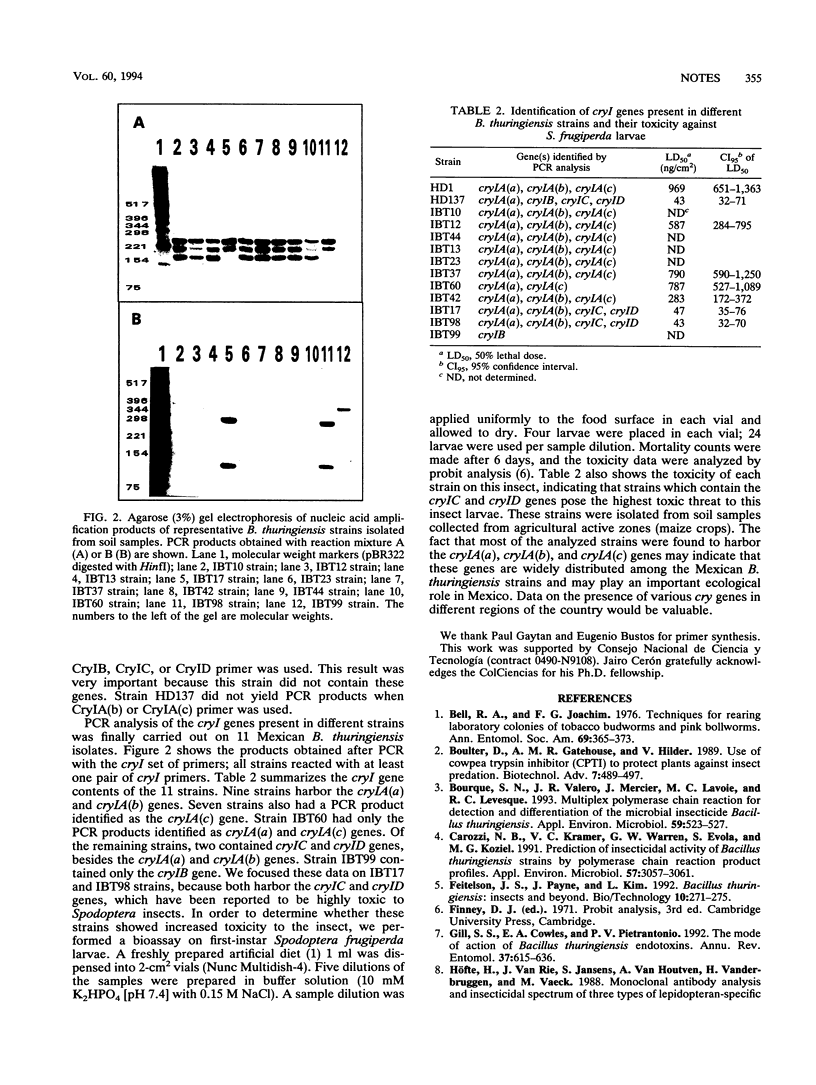
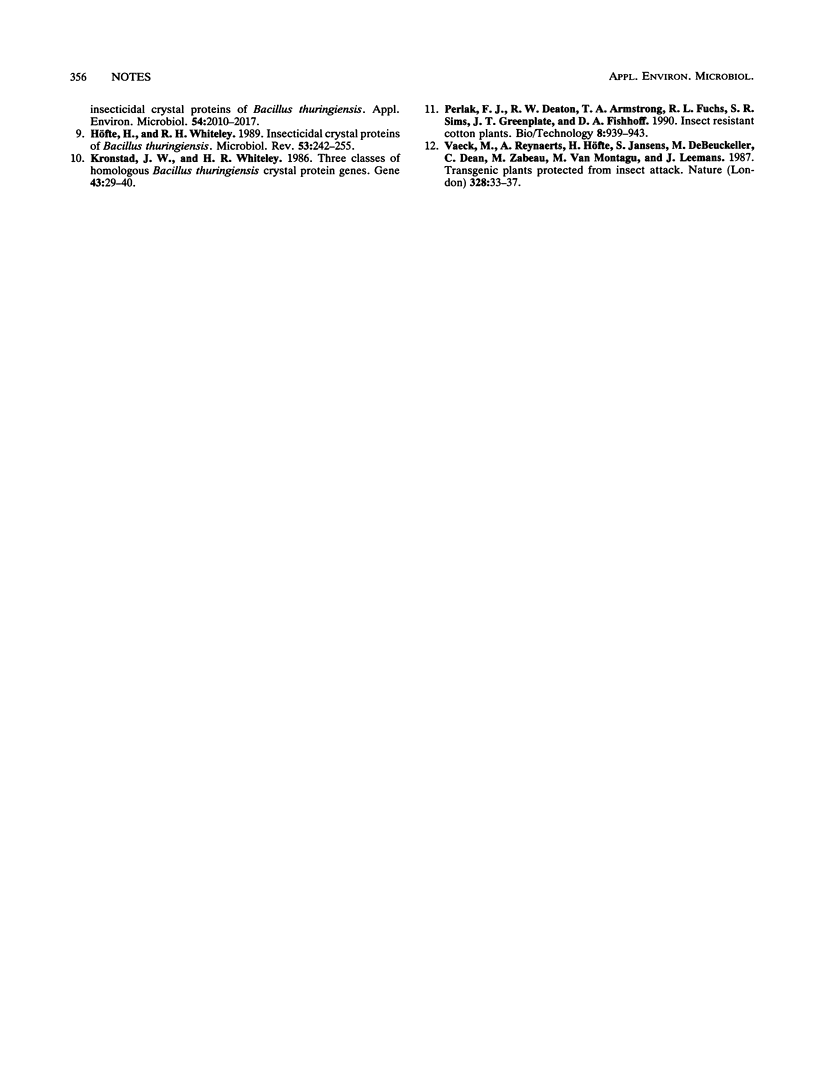
Images in this article
Selected References
These references are in PubMed. This may not be the complete list of references from this article.
- Boulter D., Gatehouse A. M., Hilder V. Use of cowpea trypsin inhibitor (CpTI) to protect plants against insect predation. Biotechnol Adv. 1989;7(4):489–497. doi: 10.1016/0734-9750(89)90720-9. [DOI] [PubMed] [Google Scholar]
- Bourque S. N., Valéro J. R., Mercier J., Lavoie M. C., Levesque R. C. Multiplex polymerase chain reaction for detection and differentiation of the microbial insecticide Bacillus thuringiensis. Appl Environ Microbiol. 1993 Feb;59(2):523–527. doi: 10.1128/aem.59.2.523-527.1993. [DOI] [PMC free article] [PubMed] [Google Scholar]
- Carozzi N. B., Kramer V. C., Warren G. W., Evola S., Koziel M. G. Prediction of insecticidal activity of Bacillus thuringiensis strains by polymerase chain reaction product profiles. Appl Environ Microbiol. 1991 Nov;57(11):3057–3061. doi: 10.1128/aem.57.11.3057-3061.1991. [DOI] [PMC free article] [PubMed] [Google Scholar]
- Gill S. S., Cowles E. A., Pietrantonio P. V. The mode of action of Bacillus thuringiensis endotoxins. Annu Rev Entomol. 1992;37:615–636. doi: 10.1146/annurev.en.37.010192.003151. [DOI] [PubMed] [Google Scholar]
- Höfte H., Van Rie J., Jansens S., Van Houtven A., Vanderbruggen H., Vaeck M. Monoclonal Antibody Analysis and Insecticidal Spectrum of Three Types of Lepidopteran-Specific Insecticidal Crystal Proteins of Bacillus thuringiensis. Appl Environ Microbiol. 1988 Aug;54(8):2010–2017. doi: 10.1128/aem.54.8.2010-2017.1988. [DOI] [PMC free article] [PubMed] [Google Scholar]
- Höfte H., Whiteley H. R. Insecticidal crystal proteins of Bacillus thuringiensis. Microbiol Rev. 1989 Jun;53(2):242–255. doi: 10.1128/mr.53.2.242-255.1989. [DOI] [PMC free article] [PubMed] [Google Scholar]
- Kronstad J. W., Whiteley H. R. Three classes of homologous Bacillus thuringiensis crystal-protein genes. Gene. 1986;43(1-2):29–40. doi: 10.1016/0378-1119(86)90005-3. [DOI] [PubMed] [Google Scholar]




